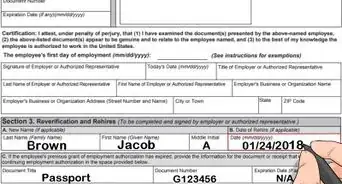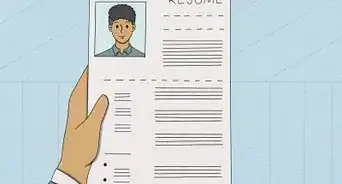This article was written by Jennifer Mueller, JD. Jennifer Mueller is an in-house legal expert at wikiHow. Jennifer reviews, fact-checks, and evaluates wikiHow's legal content to ensure thoroughness and accuracy. She received her JD from Indiana University Maurer School of Law in 2006.
This article has been viewed 52,965 times.
In a unionized workplace, employment contracts are negotiated through the collective bargaining process. Individuals selected to represent the unionized employees come together with representatives of the employer to carve out an agreement on issues such as wages, overtime, training, health care, vacation time, retirement, and other benefits and workplace standards. Whether you are a small business owner or the member of an employee union, to negotiate a union contract requires bargaining skills as well as knowledge of applicable labor laws.[1] [2]
Steps
Setting Ground Rules
-
1Choose your representatives. Both the employer and the union must have designated representatives to negotiate on behalf of the entire group.[3] [4]
- Representatives should be trustworthy and authoritative, with assertive personalities and knowledge of labor law and regulatory standards.
- Your representatives also should have a basic understanding of the employment terms and benefits available for similar groups of employees in your industry.
- Union employees typically vote to determine who will represent them in collective bargaining negotiations.
-
2Have a preliminary meeting with your team. Before you meet with the other side, your representatives should have an understanding of their negotiating authority.
- If you are a union representative, your priorities and authority typically will be set by your union members. Whether through voting or through an open meeting, employees set the boundaries of the representative's negotiating authority.
- Review the existing collective bargaining agreement, if you have one, and determine which parts of it are working already and where there is room for improvement.[5]
- You also should go over previous negotiations by looking at notes or minutes from those meetings. Analysis can help you determine which argument or negotiation styles are most effective, as well as understanding the strategies used by the other side.
- If there are people on your negotiating team who weren't present in the previous rounds, a review of those negotiations also provides them with a better understanding of the process and the people they will be working with.
- If you're a union representative, you also want to generate analysis of your industry and the employees you are representing. This data will help you prioritize negotiation issues to best represent the employees and ensure their needs are met.
Advertisement -
3Meet with the other side. During the first meeting, you will meet the people with whom you'll be negotiating and set procedures and deadlines for the collective bargaining process.[6] [7]
- Federal law requires negotiations be held at reasonable times, and there must be adequate time for proposals to be reviewed by each side.
- If the union requires additional information, such as documentation of the company's financial situation, the employer must provide adequate information and time for the union to evaluate it.[8]
-
4Determine what issues are on the table. You won't necessarily bargain over every term of the employment contract in each session, and only issues central to the employment relationship are mandatory.[9]
- Central issues typically include wages, hours, layoff procedures, production quotas, and key benefits such as health insurance.
- If the union requests it, the employer must provide advance notice of any changes it proposes to make to terms such as wages, hours, and layoff procedures.
- Whether an issue is mandatory to the bargaining process may depend on the reason for the employer's proposed change. For example, if the employer wants to close a plant because there are too few customers in the area for the plant to remain profitable, this has nothing to do with the union and typically wouldn't be considered up for negotiation.
- If there is already a collective bargaining agreement in place, there may be other issues on the table that arose as a result of the implementation of that agreement and need to be adjusted.
Making Proposals
-
1Present your opening statement. Typically the first collective bargaining session begins with an opening statement from each side.[10]
- If you have the option – no matter which side of the table you're on – try to be the one to make your opening statement first. This gives you the opportunity to control the negotiations to some extent since your proposals open the session.[11]
- During your presentation, focus on the top priorities first. For example, if you are a union negotiator and the employees' primary concern is to preserve the seniority system currently in place, you should consider leading with that point.
-
2Listen to the opening statement from the other side. Make an outline of the key points and note the areas where there is likely to be broad disagreement.[12]
- Pay close attention and write down any proposals for which you need more information before you can evaluate it. For example, if you are a union negotiator and the employer's negotiator mentions something about the company's financial status, you may need documentation of the facts he or she presented.
- Avoid picking apart the other side's proposals. Allow them the opportunity to present their statement, asking for clarification or supporting documentation if you need it, but don't reject it outright or make any expressions that would indicate your approval or disapproval.[13]
-
3Compare options and proposed alternatives. Depending on the issue at hand, each side likely has several scenarios it would find acceptable.[14]
- Since union representatives are at an inherent disadvantage regarding some aspects of the employment contract, they have the right to request documentation from the employer to support the employer's proposals.[15]
- For example, if the employer claims a wage increase isn't possible because the company can't afford it, the employer's representatives would have to provide profit and balance sheets as evidence to back up this argument.
- Watch the behavior and body language of the other side's representatives. This can give you clues as to which proposals are going to be harder sells.[16]
-
4Bargain with an eye toward compromise. Evaluate how the proposals can be implemented in a way that is most mutually beneficial.[17]
- Federal law requires the union and the employer to meet at reasonable times and bargain in good faith, which means the parties must fairly assess each others' proposals and attempt to work towards a compromise.[18]
- Keep in mind that you aren't legally required to make unappealing concessions, or to agree to something that would be disastrous to implement. If you cannot reach an agreement, you can declare an impasse and turn the situation over to the National Labor Relations Board (NLRB) for review.
- Don't begin negotiations with your bottom line – make sure each offer you make leaves you room to continue to negotiate if it is refused by the other side.[19]
- Search for common ground and weed out issues upon which there is basic agreement first. That way you have more time (and energy) to devote to issues that might be more contentious.
- Additionally, starting the negotiations with quick agreements sets the stage for more agreements. You may be able to find a mutually beneficial compromise on controversial proposals more easily if a pattern of agreement is established.
Reaching the Final Agreement
-
1Create a draft agreement. The draft agreement reflects the outcome of the first collective bargaining session and is not legally binding.[20]
- Previous agreements may serve as guides to the format and structure of the agreement. Typically the two sides have an attorney – or group of attorneys – who work together to draft the agreement so it complies with all applicable laws.
-
2Circulate the draft agreement for comments. Typically you'll have time after the draft agreement is created to evaluate how its provisions would be implemented and the effect it would have in practice.
- Typically the draft agreement will be presented to union members, who will have the opportunity either to accept or reject it.
-
3Return to the bargaining table. You may want to tweak the draft agreement after evaluation to reflect changes in position or circumstances.[21]
- For example, if the union members rejected the draft agreement, you must continue to negotiate until you reach an agreement on which the employees will agree.
- Focus on the facts that resulted in the draft agreement not being approved. Avoid making demands or ultimatums that could cut off the discussion entirely.[22]
-
4Draft the final agreement. Once you and the other side have come to an agreement on all issues, it must be put in writing before it becomes legally binding.[23]
- Your final agreement should encompass all the compromises that have been reached. Once ratified, it will be the final document that governs the employment relationship, including how disputes are resolved.[24]
- Just as the draft agreement was circulated among employees, the final agreement must be ratified by a majority of the union members before it becomes official.
-
5Execute the final agreement. Representatives of both sides must sign the collective bargaining agreement before it can be put into effect.[25]
- The final agreement will be in effect for a set period of time, typically three years.[26] At that point, collective bargaining will resume to address any changing circumstances since the agreement was entered.
References
- ↑ http://legaldictionary.net/collective-bargaining/
- ↑ http://www.dummies.com/how-to/content/collective-bargaining-basics-labor-unions-negotiat.html
- ↑ http://legaldictionary.net/collective-bargaining/
- ↑ http://www.dummies.com/how-to/content/collective-bargaining-basics-labor-unions-negotiat.html
- ↑ http://www.nolo.com/legal-encyclopedia/contract-negotiation-11-strategies-33340.html
- ↑ http://legaldictionary.net/collective-bargaining/
- ↑ https://www.nlrb.gov/rights-we-protect/employerunion-rights-and-obligations
- ↑ http://www.nolo.com/legal-encyclopedia/collective-bargaining.html
- ↑ http://www.nolo.com/legal-encyclopedia/collective-bargaining.html
- ↑ http://legaldictionary.net/collective-bargaining/
- ↑ http://www.nolo.com/legal-encyclopedia/contract-negotiation-11-strategies-33340.html
- ↑ http://legaldictionary.net/collective-bargaining/
- ↑ http://www.fxcrowley.com/dont-make-negotiating-mistake/
- ↑ http://legaldictionary.net/collective-bargaining/
- ↑ http://www.nolo.com/legal-encyclopedia/collective-bargaining.html
- ↑ http://www.fxcrowley.com/dont-make-negotiating-mistake/
- ↑ http://legaldictionary.net/collective-bargaining/
- ↑ https://www.nlrb.gov/rights-we-protect/employerunion-rights-and-obligations
- ↑ http://www.nolo.com/legal-encyclopedia/contract-negotiation-11-strategies-33340.html
- ↑ http://legaldictionary.net/collective-bargaining/
- ↑ http://legaldictionary.net/collective-bargaining/
- ↑ http://www.nolo.com/legal-encyclopedia/contract-negotiation-11-strategies-33340.html
- ↑ http://legaldictionary.net/collective-bargaining/
- ↑ http://www.nolo.com/legal-encyclopedia/collective-bargaining.html
- ↑ http://legaldictionary.net/collective-bargaining/
- ↑ http://www.dummies.com/how-to/content/collective-bargaining-basics-labor-unions-negotiat.html
About This Article
Negotiating a union contract is important for ensuring you and other employees get the wages, training, and benefits you deserve. If you’ve been chosen as a representative for your union, you’ll want to meet with members ahead of time to make sure you understand everyone’s priorities and needs. When you meet with your employer, typically each side will have a chance to present their opening statement. This should include an overview of what your top priorities are for the union. For instance, maybe you want to preserve the seniority system and introduce more raises. After your employer presents their statement, you’ll have some time to compare options for the company and negotiate. If your employer claims they don’t have enough money for something, you’re allowed to ask for documentation to back it up. Keep in mind that if you’re not able to come to a compromise, you can turn the situation over to the National Labor Relations Board for review. To learn how to write a draft of a final agreement, read on!























-Status-Step-6.webp)
















































